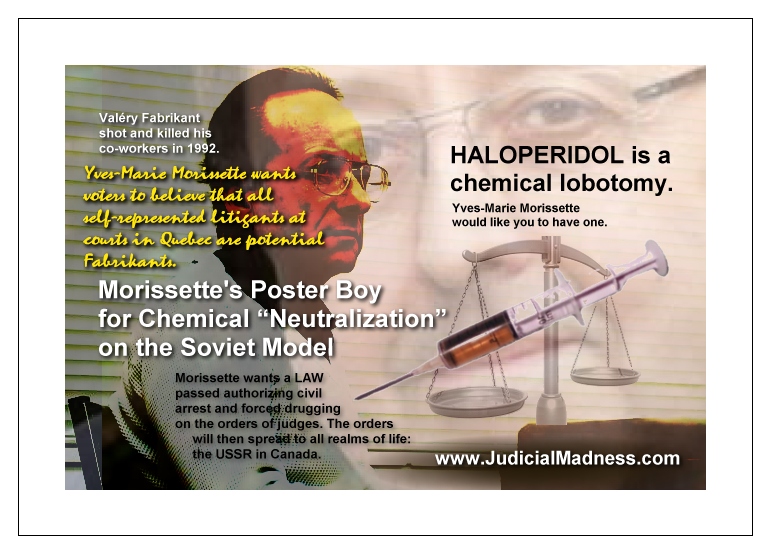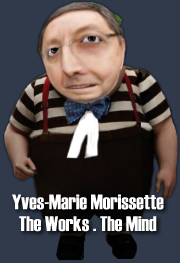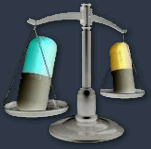Haloperidol is Neurotoxic
Haloperidol is Neurotoxic
By Sandra Steingard, MD
Featured Blogs July 21, 2013
This is the headline of an editorial in the most recent edition of Current Psychiatry. It is written by Henry A. Nasrallah, MD, a prominent psychiatric researcher. This is one of the free journals sent to, I assume, every psychiatrist in the US. Although it says it has a subscription cost of $113/year, I know I have never been asked to pay. I assume it is supported by its advertisements, 18 pages of which in this 54 page journal were from drug companies.
This was a powerful and unequivocal editorial. Dr. Nasrallah writes,
“The FDA would never approve haloperidol today, given the serious harm it can do to the brain, despite its efficacy for psychosis. (It’s interesting how the FDA bans a drug immediately if it causes tragic birth defects, such as thalidomide, but not if a drug is destructive to the brain tissue of a disabled adult patient.)”
His target is all of the first generation neuroleptics but he focuses on haloperidol because it is the one most often-studied. The neurotoxicity he cites includes a number of findings suggesting that haloperidol promotes cell death. This could provide an explanation for the findings of brain atrophy after long-term exposure to these drugs, as well as the findings of worse functional outcomes in those who remain on neuroleptics.
But Dr. Nasrallah has another message. The newer neuroleptics – the so-called second-generation antipsychotics (SGAs) – do not share these problems. He cites one review paper that reports on the neuroprotective properties of these drugs. While I am aware of research suggesting that clozapine and perhaps olanzapine have neuroprotective qualities, I was not aware that this advantage is conferred to all second-generation drugs. The studies on outcome and brain atrophy were conducted over the past two decades when the SGA’s quickly became the most commonly prescribed neuroleptics.
However, if what Dr. Nasrallah says is correct, this is important for many reasons. First of all, it is an admission from a prominent research psychiatrist of the limitations of the neuroleptic drugs. It also suggests a strong reason for prescribing the second-generation neuroleptics rather than the older ones.
People on this site wonder how psychiatrists learn new information and what influences their thinking. A journal like Current Psychiatry has an impact. It often has review papers that are easy to read. Most of us are busy all day, and having quick review papers from respected academicians is helpful. It would be easy to read this editorial and walk away with the new ‘knowledge’ that haloperidol is bad but the newer drugs are good.
However, the time has long since passed that I could read a review article such as this and accept it at face value. There was no conflict of interest report for Dr. Nasrallah attached to this article, but just editing a journal that is largely supported by Big Pharma is, to me, conflict of interest.
It is concerning to me that in this same journal, there is an article about shared decision making. The article describes an approach that the author calls “Participatory Pharmacotherapy: 10 Strategies for Enhancing Adherence.” While I have no objection to what he writes – in fact I am not sure how else one could practice – I do wonder at the bolded comment that “Patients with psychosis, cognitive impairment, below-average intelligence and substance use disorders, are not good candidates” for this approach. If it is true that the SGA’s have neuroprotective value, this needs to be considered against their considerable impact on weight gain and the consequent risk of metabolic syndrome. Since the indications for these drugs are “patients with psychosis”, wouldn’t we want to be be discussing these risks with them and at the very least follow guideline number 1, to “Encourage patients to share their opinion of what a desirable treatment outcome should be” and number 3, “Engage patients in choosing the best medication for them”?
The current evidence suggests there is no differential efficacy between the older and newer neuroleptics (Leucht et al). Most of the new drugs are now available off-label so the costs have come down. Of note, the ad just after this editorial was for Abilify Maintenna – the injectable long acting version of aripiprazole. The main market competition these days between branded and generic neuroleptics is among the long-acting injectables (LAI). The only generic LAI on the market is haloperidol (mysteriously, fluphenazine decanoate recently went out of production). Olanzapine, risperidone, and now aripiprazole are all available in the long-acting form. The timing of this editorial is suspect.
At the same time, I am not going to dismiss what Dr. Nasrallah has to say. If he is correct this should influence practice. I plan to spend some time researching this on my own.
I was going to wait to write what I learn – this is complex material and it will take me a few months. But I decided to post this part now for this reason: many of you are highly knowledgeable. I decided to tap into your expertise to help me with my research. Please let me know of any articles you think I should read. I will get back to you with what I learn.
_____
Sandra Steingard, MD
Anatomy of a Psychiatrist: Dr. Steingard chronicles how she is integrating information from Anatomy of an Epidemic into her community mental health practice. She also discusses changes in Vermont’s mental health system and the influence of pharmaceutical advertising on clinical practice.




